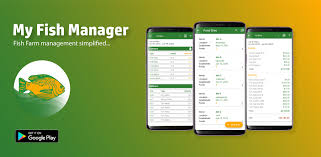
As the aquaculture industry continues to grow and evolve, managing fish farms efficiently has become increasingly critical. In 2024, fish farm management software will play a pivotal role in optimizing operations, enhancing productivity, and maintaining sustainability. Whether you run a small aquaculture business or a large commercial enterprise, selecting the right software can make all the difference. In this blog, we will explore the key features to look for in farm management software to help you make an informed decision.
1. Comprehensive Farm Monitoring and Data Analytics
Modern farm management software must offer robust monitoring tools and real-time data analytics. Effective monitoring allows farmers to track key parameters such as water quality, temperature, and oxygen levels. Data analytics features help in:
- Identifying trends and anomalies
- Predicting growth rates and harvest times
- Enhancing decision-making processes
Example: A study by the Food and Agriculture Organization (FAO) found that aquaculture businesses that utilized data analytics reported a 20% increase in operational efficiency.
2. Water Quality Management
Water quality is critical for fish health and growth. Advanced farm management software should provide features for monitoring and managing:
- pH levels
- Salinity
- Ammonia levels
- Dissolved oxygen levels
Tip: Look for software that integrates with IoT devices for automatic water quality testing and alerts when parameters go out of range.
3. Inventory and Feed Management
Efficient feed management is essential for reducing costs and minimizing waste. Key features include:
- Automated feed scheduling
- Real-time inventory tracking
- Alerts for low feed stock
- Detailed reports on feed consumption and efficiency
Stat: According to research by Aqua Research Group, optimized feed management can reduce feed costs by up to 15%.
4. Biometric Data Tracking
Tracking the growth and health of fish populations is essential for optimal farm management. The software should enable farmers to record and analyze biometric data such as:
- Fish weight
- Growth rates
- Mortality rates
Why it Matters: Proper biometric tracking ensures timely harvesting and helps in maintaining a healthy fish population.
5. Automated Reporting and Compliance Management
Aquaculture businesses must comply with various regulations and maintain detailed records. Key features to look for include:
- Automated report generation
- Compliance tracking for local and international standards
- Customizable report templates
Example: Regulatory compliance features can save up to 30% of the time spent on manual reporting.
6. Mobile Access and Remote Monitoring
In 2024, mobile access is no longer a luxury but a necessity. Look for software that offers:
- Cross-platform compatibility
- Mobile apps for real-time monitoring
- Remote access to farm data and alerts
Benefit: Mobile access enables farm managers to respond quickly to issues, even when they are off-site.
7. Artificial Intelligence and Machine Learning Integration
AI and ML are transforming the aquaculture industry by enabling predictive analytics and automation. Key AI-driven features to look for include:
- Disease prediction models
- Automated feeding systems
- AI-based growth forecasting
Stat: A report by MarketsandMarkets predicts that AI adoption in aquaculture will grow by 30% annually through 2028.
8. User-Friendly Interface and Customization
Ease of use is critical for widespread adoption of farm management software. Features to consider include:
- Intuitive dashboards
- Customizable interfaces
- Multi-language support
Tip: Ensure that the software is easy to train staff on and has comprehensive customer support.
9. Financial and Accounting Tools
Effective financial management is essential for the profitability of aquaculture operations. Look for software that offers:
- Budget tracking
- Expense categorization
- Profit and loss statements
Benefit: Integrated financial tools can reduce accounting errors and provide valuable insights into farm profitability.
10. Security and Data Privacy
With the increasing digitization of fish farming operations, data security is paramount. Ensure that the software provides:
- Secure data storage
- Role-based access control
- Regular software updates
Example: The use of secure software can reduce data breaches by up to 40%, according to cybersecurity experts.
Choosing the Right Fish Farm Management Software in 2024
When selecting these farm management software, consider the following steps:
- Assess Your Farm’s Needs: Identify the specific challenges and goals of your operation.
- Compare Features: Look for software that meets your operational requirements.
- Check Reviews and Testimonials: Seek feedback from other aquaculture businesses.
- Request a Demo: Test the software to ensure it meets your expectations.
- Consider Scalability: Choose a solution that can grow with your business.
FAQs
1. What is fish farm management software? These farm management software is a digital tool designed to help aquaculture businesses monitor and manage their operations efficiently.
2. How does these farm management software improve productivity? It automates tasks such as feeding schedules, water quality monitoring, and data analytics, leading to better decision-making and reduced operational costs.
3. Can I access these farm management software on my mobile device? Yes, many modern solutions offer mobile apps for real-time monitoring and remote access.
4. What are the cost considerations for these farm management software? Costs can vary based on features, scalability, and support. Consider a solution that offers a good balance between price and functionality.
5. How secure is this farm management software? Look for software that provides robust data security measures, including encryption and role-based access control.
Are you ready to transform your aquaculture operations with the right farm management software?
Conclusion
In 2024, fish farm management software is a vital tool for optimizing operations, enhancing sustainability, and staying competitive. By focusing on the key features outlined in this guide, you can select a solution that meets your specific needs and helps your aquaculture business thrive.